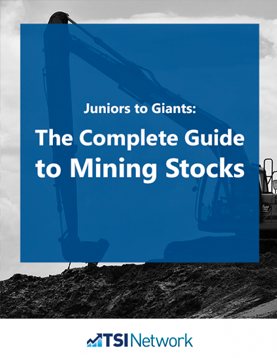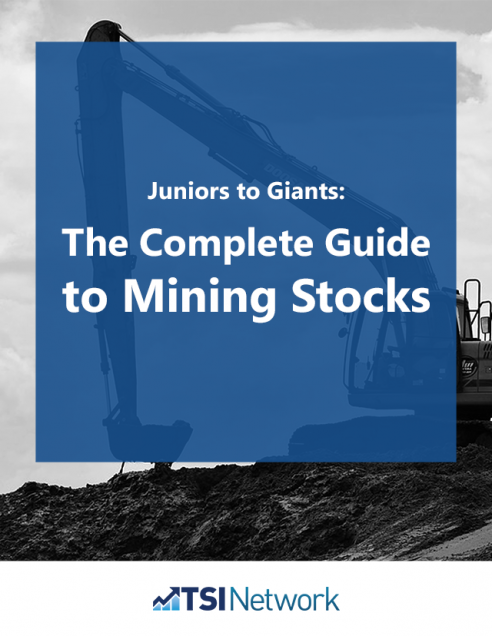Topic: Mining Stocks
Investing in mining stocks? Follow these 20 Successful Investor tips
Here’s a stock tip: Successful investing in mining stocks, especially jr mining stocks, can be hard, especially in 2024 given volatile commodity prices. Still, the following 20 tips should help guide you to top miners regardless
When investing in mining stocks, you’ll find that they can be broken down into two categories, majors and junior mining, or jr mining, stocks. Majors, the kind we focus on for our portfolio management clients, are typically mining companies that have been in the business for many years and more often than not they operate producing mines on a global scale. Majors have proven methods for exploration and mining, and have consistent output year over year.
Junior mining stocks are usually smaller companies and take on risky mining exploration. If a jr mining stock is successful at finding a mineable mineral deposit, it can mean huge returns for the junior mining stock and its investors.
Learn everything you need to know in 'The Complete Guide to Mining Stocks' for FREE from The Successful Investor. Best Canadian Mining Stocks TSX: Plus Gold Stocks, Canadian Diamond Mines and more.

How Mining Stocks make a difference
More stock tips: While jr mining stocks may offer some speculative appeal, we continue to recommend that you (as we do for our portfolio management clients) cut your risk in the volatile resource sector by investing in mining stocks of well-established mining companies with high-quality reserves. Generally, that does not favour jr mining stocks. However, resource stocks (and this includes oil and gas, of course, as well as junior mining stocks) should make up only a limited portion of your portfolio—say less than 20% for a conservative investor or as much as 30% for an aggressive investor. That cap for investing in minerals is something to keep in mind as your portfolio holdings grow and your sector representation changes.
20 stock tips for investing in mining stocks
- Focus on stable political regions when investing in minerals: For our portfolio management clients, we generally stay away from mining companies, operating in insecure and politically unstable regions such as Venezuela, or in countries with little respect for property rights and the rule of law, like Russia or Mongolia. Mining, especially junior mining firms, is inherently a politically vulnerable business that applies to investing in minerals of any kind, from copper to gold. Simply put, you can’t move the mine to another country, and local citizens sometimes believe that a foreign mining company is robbing them of their birthright, even though they rely on the foreign company’s capital and expertise to get any value out of the ground.
- investing in minerals as a hedge against inflation: Many investors buy mining stocks, including gold stocks, as a hedge against inflation, and some mining stocks pay dividends. But most mining stocks also offer an inflation hedge—they rise along with commodity prices and inflation.
- Aim for a dividend yield: Copper stocks generally have higher dividend yields than gold stocks because they have steadier demand and more stable prices. As well, they’re usually much cheaper than gold stocks in relation to their earnings and cash flow. That means they potentially have less room to fall if markets in general fall. That’s also another way of saying that they can be less risky than gold. It’s something you should consider as part of your own portfolio management.
- Consider investing in mining ETFs—especially for investing in minerals like gold, silver: The overall trend for gold and silver, including the best junior mining stocks, has been to move higher. Although they will likely remain volatile, they may move up even further over the longer term if inflation or global political and economic instability hurt key currencies, such as the euro or the U.S. dollar. If you want to hold a number of gold or silver stocks, many exchange traded funds offer top-quality global miners and low fees. The best among those funds will avoid or limit their exposure to jr mining stocks.
- Look for longevity in reserves: Here’s one of our key stock tips: When you invest in any resource stock, gold included, you need to look at how long the company’s reserves are likely to last. Those with low reserves need to have consistent success in their exploration programs to maximize the production of the mine and the surrounding area. That success is far from guaranteed.
- Invest in stocks with a broad base of operations: Even if the company has strong reserves, the best mining stocks with the least risk also have a diversified reserve base. That way they are not dependent on a single mine’s production or political stability in any one country. Mining companies can also increase their reserves by making acquisitions—with mineral prices down from their record highs, you may see an increase in mining company acquisitions at distressed prices.
- Look into steady production when investing in minerals: Some of the most highly promoted mining stocks, including gold mining stocks, are penny stocks that have yet to produce an ounce of gold or other minerals. Many of these stocks must still add to their reserves, invest in mine-feasibility studies, and raise a lot of money before they go into production. The prospects for most of these penny-mine, or junior mining, properties, even though they may be in areas with production from existing mines nearby, are far from certain.
- Seek strong reserves, low production costs and mines that are already producing: Good mining stocks have a range of development projects, but their strong base of production cuts the risk of relying on new developments alone. That’s a key consideration for your portfolio management planning.
- Focus on established areas: When we recommend mining stocks, we prefer those that operate in an area with geology that is similar to that of nearby producing mines.
- Think like an environmentalist: We look at environmental constraints where juniors are looking for minerals. In Europe and certain parts of the U.S, they need a particularly rich find to justify the costs of overcoming environmentalists’ objections.
- Invest in well-financed mines: When you’re looking at investing in minerals, look for well-financed mining stocks with no immediate need to sell shares at low prices, since that would dilute existing investors’ interests. The best junior mining stocks have a major partner who has agreed to pay for the drilling or other exploration or development, in exchange for an interest in the property.
- Look for strong balance sheets: The best mining stocks all have strong balance sheets and low debt.
- Pick the right location: We want to see favourable factors, like strong mineral showings from extensive drill programs, before we recommend investing in mining stocks that operate in hostile environments, like the high Arctic.
- Avoid hype: For our portfolio management clients, we avoid investing in mining stocks that trade at unsustainably high prices due to broker hype or investor mania about the underlying commodity (such as gold). Instead, when investing in minerals, we advise you to focus on reasonably priced mining stocks with favourable geology.
- Look at the market cap: As far as stock tips go, this one is important: We always look at the market cap of gold mining stocks versus the estimated value of the mineral resource they have in the ground. Sometimes, a company’s marketing efforts are so successful that they drive the stock up too high in relation to the size of its ore body. For example, we like a gold stock’s market cap to be no more than half the value of the gold. We assume that the company will be able to expand its ore reserves after the mine opens, but if the mineral reserves are double the gold mining stock’s market cap, it provides a margin of safety.
- Seek high average daily trading volume: This is one positive factor to look for when picking junior mining stocks. The more actively traded junior mines are, the more liquid they are, which makes them easier to dispose of when it’s time to take profits.
- Avoid mining stocks that trade at unsustainably high prices: This is usually due to broker hype or investor mania about the underlying commodity (such as gold). Instead, we focus on reasonably priced mining stocks with favourable geology.
- Identify a partner: The best junior mines have a major partner who has agreed to pay for the drilling or other exploration or development, in exchange for an interest in the property. That’s a strong plus for any jr mining stock.
- Think twice about gold bullion: Gold bullion investments have hidden costs that dramatically eat into your earnings potential over time. Gold bullion and gold coins can require insurance and special storage plans which will incur costs for as long as you keep them.
- Invest in gold stocks instead of bullion: Invest in gold through gold-mining stocks–that’s how we handle gold exposure on behalf of portfolio management clients. Unlike bullion, these stocks at least have the potential to generate income. High-quality gold stocks can pay off nicely by establishing new mines and raising their production, even if gold goes sideways for a lengthy period. But keep in mind that no matter how appealing they look, you should limit gold stocks to a modest part of your portfolio.
Investing in mining stocks can be highly volatile; still, even junior mining stocks often make good long-term investments. They may be well-known stars or quiet gems, but they do share one common attribute—they have grown at higher-than-average rates within the mining industry, or within the market as a whole, for years or decades.
Aside from oil and gas stocks, do you continue to hold mining stocks? What else would you add to this list of things to consider?
Note: This article was originally published in 2014 and is regularly updated.




I like the idea of an ETF with a group of international miners, the best of the best sort of thing. Otherwise, I’m not sure I really want to wade back into the resources sector right now.
Nice read. I usually pick the mines of bestgoldmines.com. They always outsmart me.
Thanks for your comment.